The Impact of Innovative Medical Technology on the NBA
By Tyre Richardson | March 28, 2022
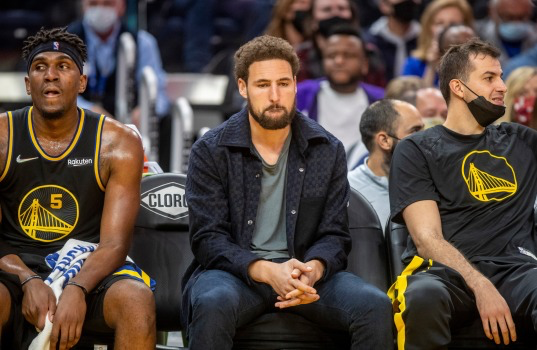
NBA Champion. NBA All-Star. The record-holder for most 3 pointers in a game. 37 points in a quarter. 60 points on 11 dribbles. Game 6 beast. These are all words that describe what has been an underrated career of Klay Thompson up to this point. Drafted by the Golden State Warriors in 2011, his accomplishments have been nothing short of amazing as he has continued to be loved and praised by DubNation. Yet, following the 2019 NBA Finals, I, along with hundreds of thousands of other Warrior fans, could not bear to relive the devastating moment in which he had attempted a dunk with Danny Green trailing. Falling and exerting enough force to tear his ACL - right away, this moment would be one that would crush, not only Thompson, but basketball fans all over the world.
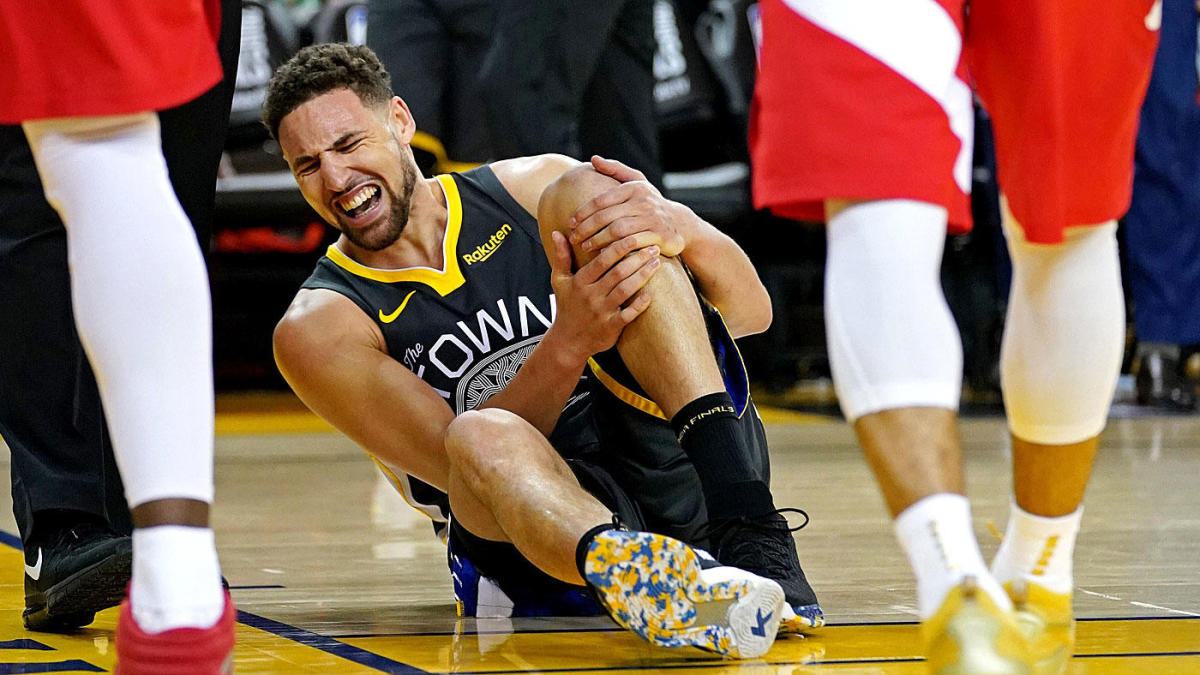
On January 9th, 2022, after 941 days without playing a basketball game, Klay made his return. The moment in which he was finally announced in the starting lineup could not have been any more bittersweet, especially when considering the long stretches that the team had to go without playing with Thompson and watching him look destroyed mentally on the bench at times.
With any type of career-altering injury, you cannot help but question whether or not Thompson would ever return to playing at the level in which he once had within his prime. Most basketball fans would categorize a torn ACL or Achilles tendon as the most probable “career-ending” injuries due to the number of times they have jeopardized an athlete’s career. Most notably, within April of 2012, Derrick Rose (former Chicago Bulls star) tore his ACL within the playoffs literally the season after winning his first and only MVP award. As we all know, this one injury would be something that would significantly alter his career as he had gone from one of the league’s top talents to a player who has been moved from team to team in a matter of years.
Yet within only a decade after these commonalities, it feels as if players are actually improving even after suffering a major injury. Time and time again, we see players, like Zach Lavine, Kevin Durant, and even Paul George, who have gone through horrific injuries bounce right back up like it's nothing. The devastating injuries that once were referred to as the beginning of a downward spiral are now simply looked upon as a small inconvenient roadblock in which players, ranging from role players to superstars, can back bounce from to either retain their level of play or surpass it.
Throughout this decade we have seen the journey of Apple products, video games, and even self-driving cars. Technology has been booming and it does not seem like it will be slowing down any time soon as there has been an increased emphasis on applying technology towards the health industry.
In 2016, the NBA added its first health gadget with Whoop which was a device worn on the wrists of players that was built to track metrics such as heart rate, body temperature, and body movement. These stats were calculated per day to allow teams to analyze how a body is functioning and measure how well a body is recovering to ultimately optimally recover from injuries. You may even notice some of the up-to-date gadgets that players are wearing nowadays such as a seat compression cushion known as “Hyperrice” which uses percussion, vibration, and thermal technology to keep players warm on the bench to prevent them from injuring themselves prior to their body properly adjusting to the game’s pace. Today, the focus on these gadgets is for injury prevention and injury recovery to allow these players to consistently play every game at a consistently high level. But based on the initial implementations, have the NBA’s efforts truly been effective?
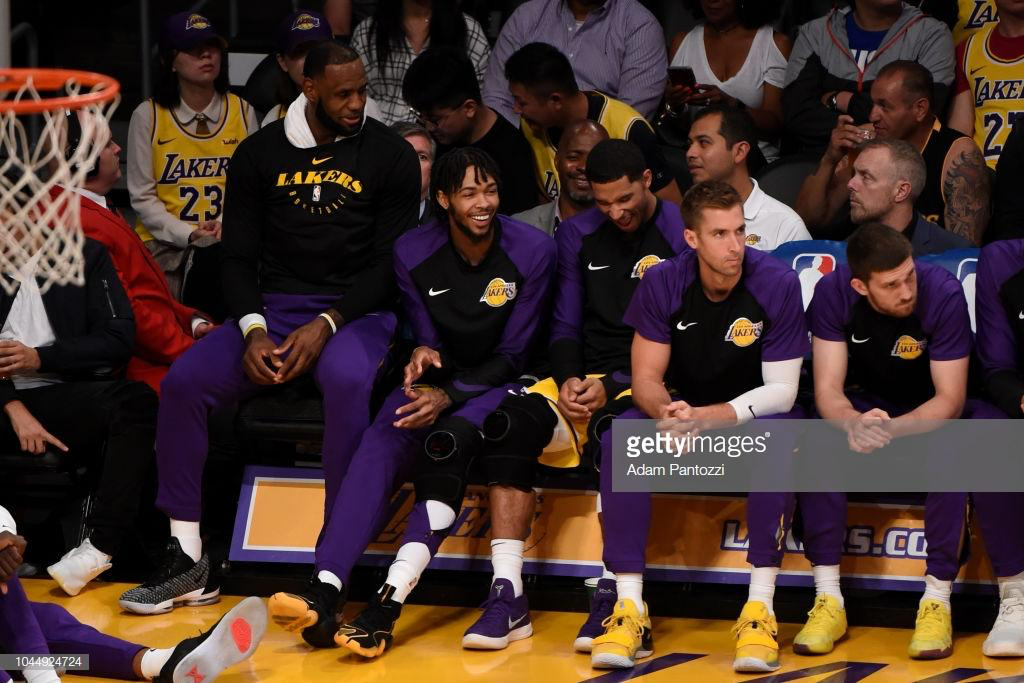
In this article, we will be taking a look at the historical data on the three metrics that are associated with a “career-ending” injury including frequencies, recovery times, and changes in performances.
First off, we will be focusing on the frequency of injuries. To the average NBA fan, it seems as if over the last couple of years there has been an increase in the number of injuries that are occurring with notable players such as Jamal Murray, Lebron James, Anthony Davis, and Kevin Durant being sidelined. In reality, there was actually a 6% decrease in injuries within 2021 in comparison to the previous season according to league data. A big proponent of this stat has been due to the league-wide emphasis on using injury prevention medical tools such as HyperRice seat cushions which works to allow the body to stay warm to the moment they check-in instead of feeling sore and tight similar to how most individuals feel when finally getting out of bed.
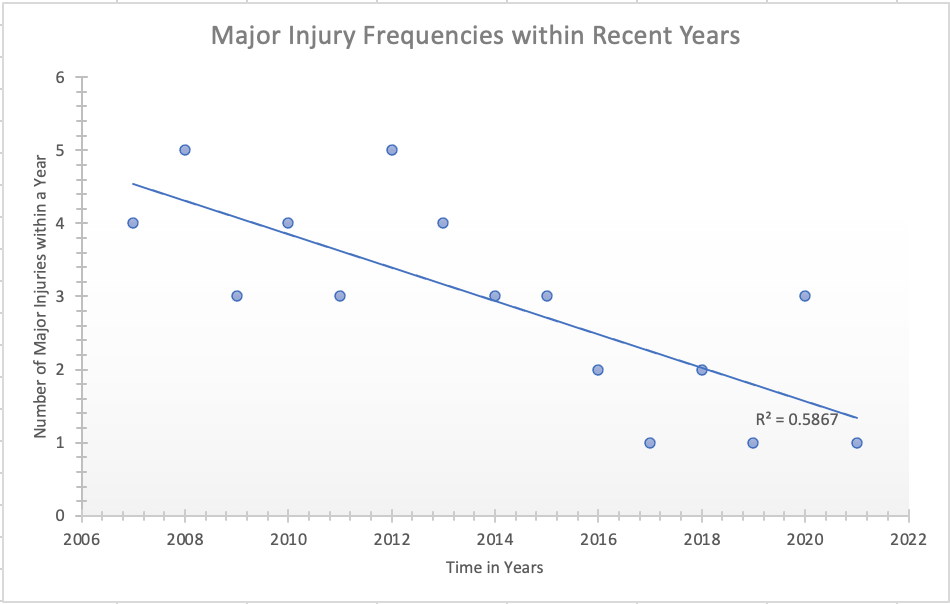
As for reference, here is a linear regression graph that highlights the amount of ACL or Achilles type of injuries that occur within a given year since 2006. An R squared value of 0.5867 shows that there is some significance upon this change, and as we can clearly see, the amount of these major injuries that occur have been steadily decreasing. We can give credit to these medical tools such as the Hyperrice seat cushion that work to prevent injuries in-game as immediately after 2015 (the year in which medical technology was first implemented), there was a drastic drop in injury rate.
The next metric I measured is a player’s performance once they do come back from injury. The main propellor towards the ACL and Achilles injuries being known for being “career-ending” injuries was due to the typical downgrade in player performances following suffering it.
This is shown most in former superstars of the league such as Kobe Bryant, Baron Davis, and Patrick Ewing immediately taking a dramatic hit in their ability to play. It is no secret that basketball is a physically demanding sport that requires the ability to run, jump, and perform combinations of quick motions at a high level. Therefore once a player typically suffers one of these types of injuries, their lower body control, and force stability are just not quite the same.
Using Box Plus-Minus as the main indicator for player impact within a game, players within the 1990s throughout 2010s tend to have a higher impact before a major injury than in comparison to after. Typically a player has a higher BPM prior to their injury just due to the fact that they might have been more athletic to make a more impactful play. For example, Michael Redd went from averaging a BPM of +2.14 to a BPM of -1.23 following his ACL tear in 2009, and Kobe Bryant went from +4.5 BPM to a -2.13 BPM in 2013. Yet, we were curious to see how these numbers compared today.
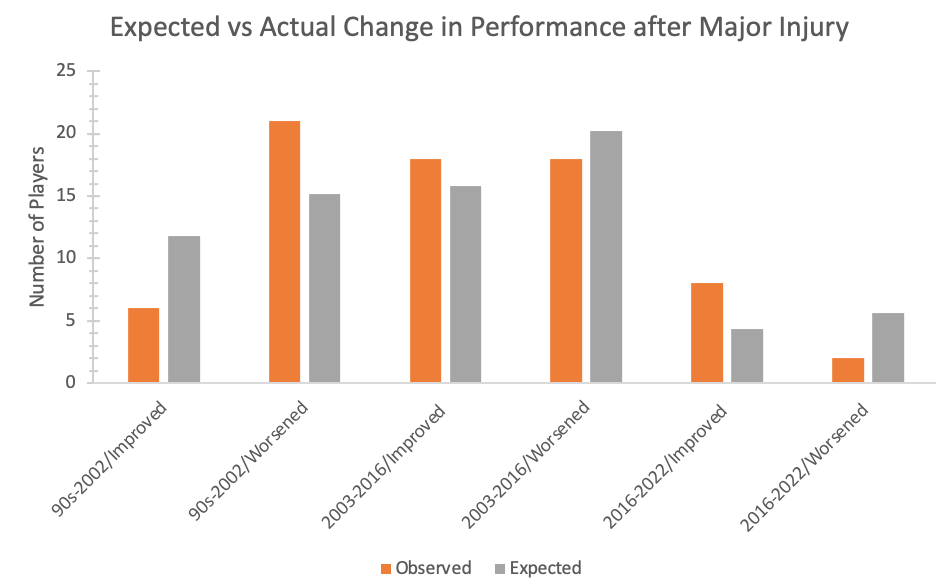
As we can see through this Chi-Squared test, there is a significant increase in the number of players who genuinely improved their game instead of worsening as the number of players who improved their game surpassed the expected amount within 2016. This statement is validated through the extraordinary evidence of players such as Zach Lavine who went from a BPM of -2 to +1.59 by transforming his game and maximizing his recovery.
These results imply that performance recovery has changed over time, and that this difference is truly significant due to the minimal health action in the 1990s resulting in more players failing to return to the same level of play in comparison to post-2015 - likely because the league implemented new methods to keep players healthy which allowed players to improve.
Finally, we wanted to observe the recovery times of players to see if there was a correlation between recovery speed and era.
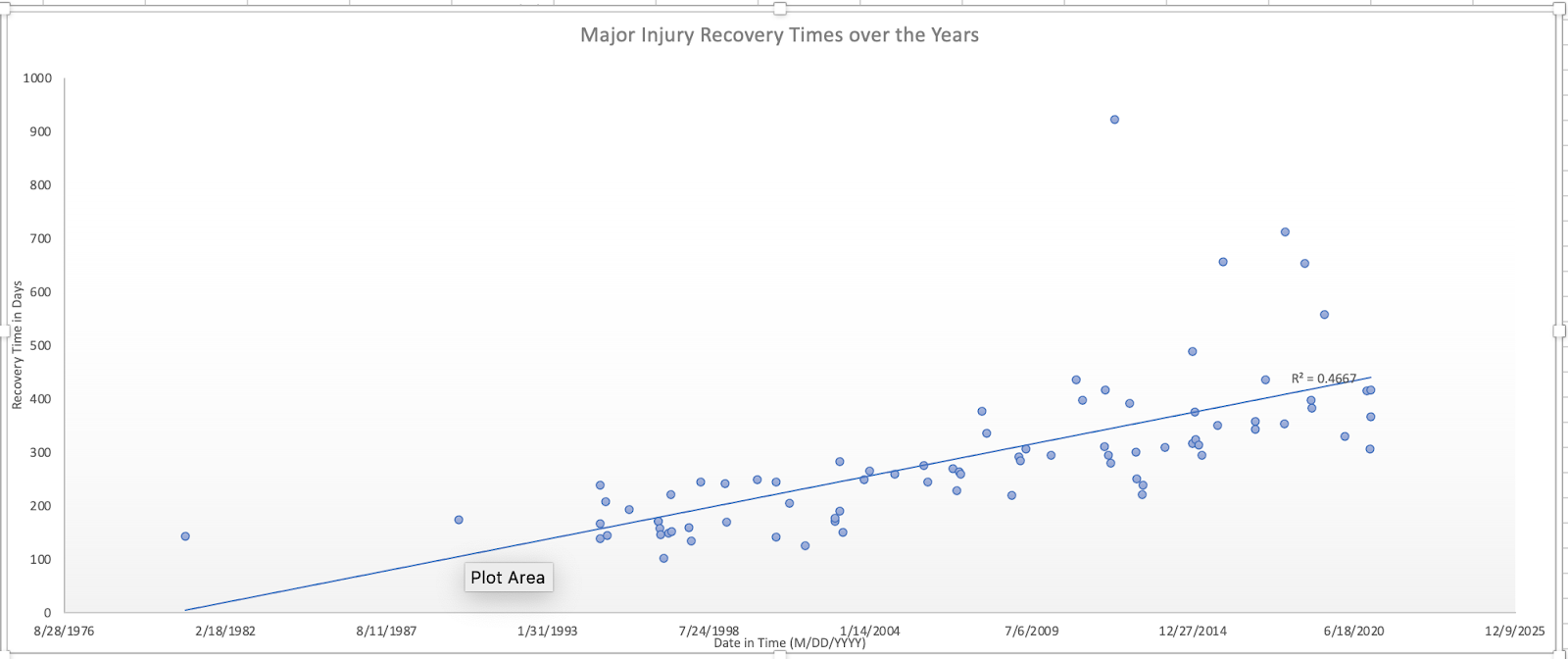
Using a similar linear regression graph, we can see a correlation between each major injury recorded for a player and the amount of time it takes for them to heal. Initially, we assumed that because there are now innovative ways such as health trackers that allow players to fully optimize their recovery process to come back sooner, but in reality, the graph shows the opposite effect. Noticeably, it is actually more rest and constant treatment that significantly allows a player to efficiently heal their bodies naturally.
In essence, this would make sense as the athletes’ bodies need time to properly recover from a stress injury in order fully return back to the level of play that they were at prior. We can clearly see through each one of these tests that the medical additions which the NBA has made have allowed players to remain healthy and play at a high level constantly even following what used to be once considered career-ending injuries.
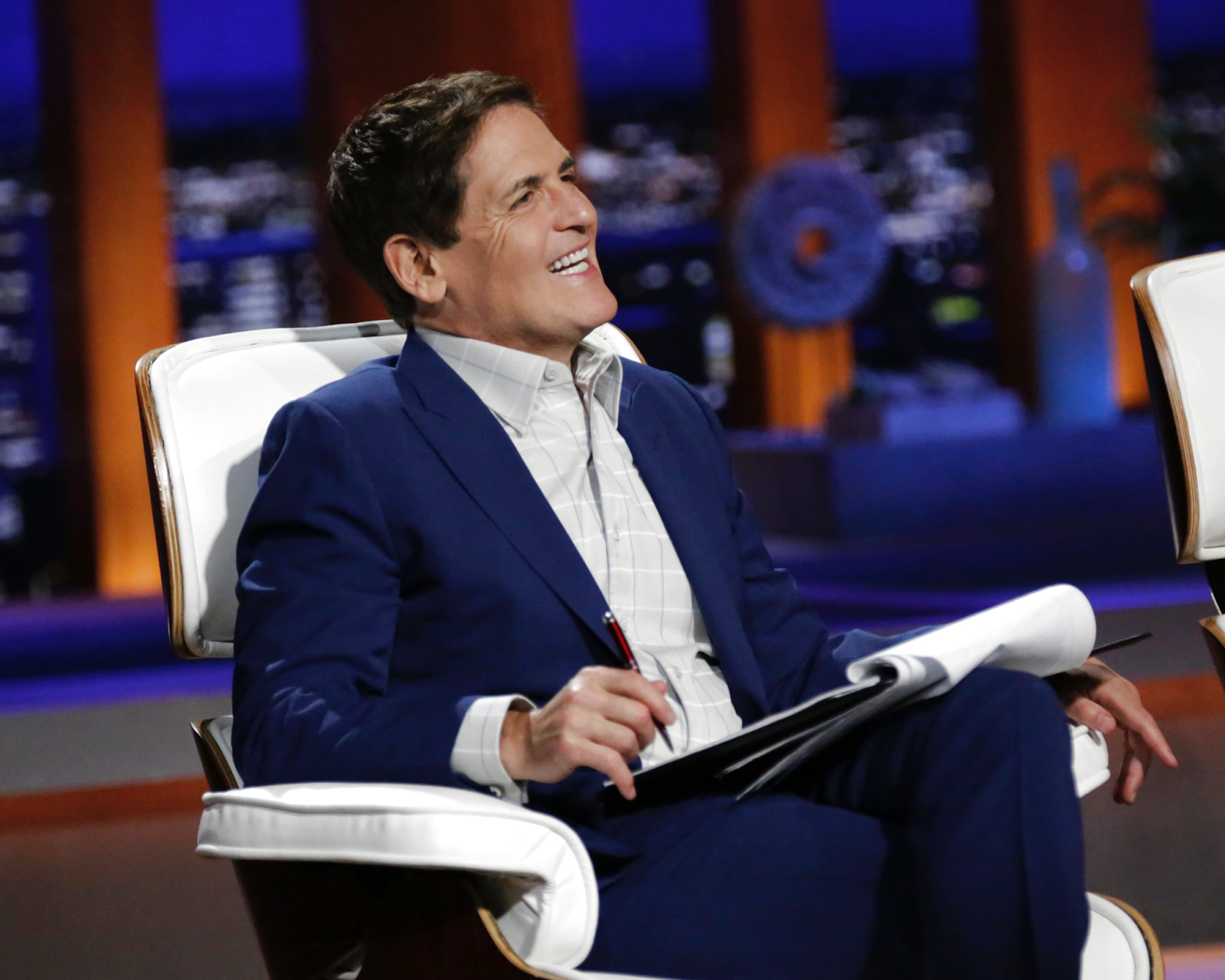
As for the next steps, there has been a superb amount of advocates towards such more adaptive protection including Dallas Mavericks owner, Mark Cuban, who has invested in several startups such as BetterGuards (ankle protection system), Breathwork (health and performance app focused on breathing exercises), and Uplift (an artificial intelligence technology that uses tracking and 3D analysis to enhance health and performance) - all in which focus on improving the consistent abilities and availabilities of NBA players.
Ultimately, what once used to be considered the end of all career injuries is now something that players recover from like a jammed finger. Therefore, through the future use of countless health gadgets that optimize the recovery and prevention of injuries, there is no doubt in my mind that a player like Klay Thompson returns to being one of the best players in the NBA.





